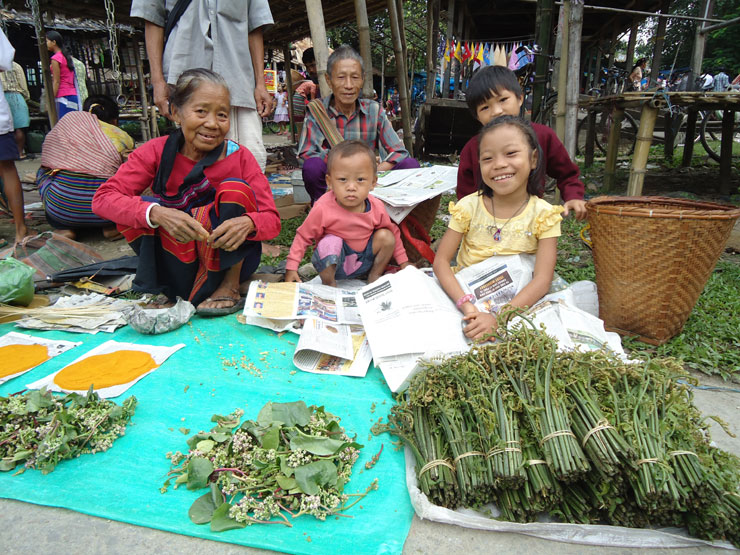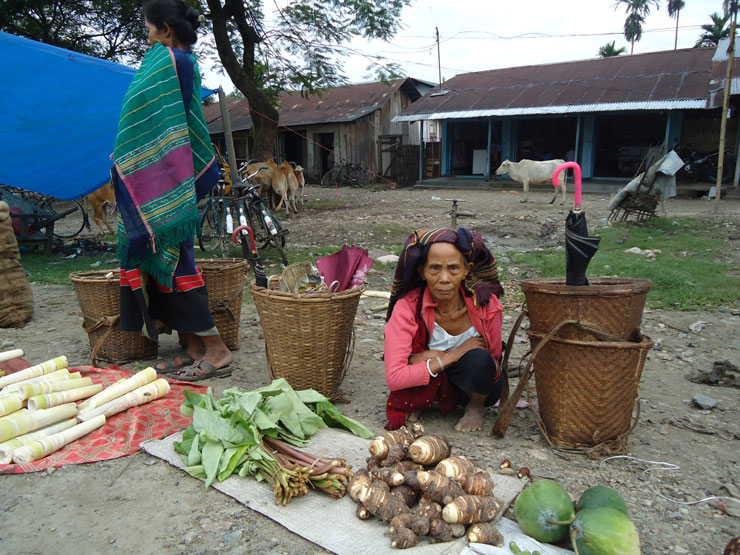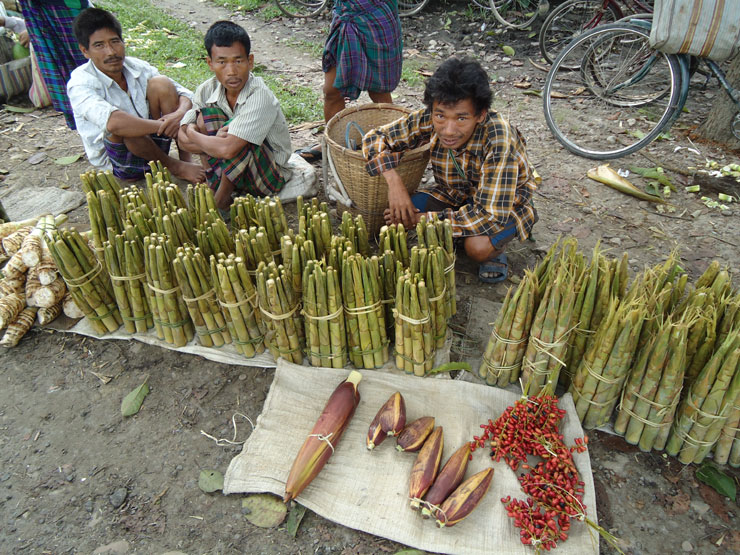Market Day In Diyun
By Yoginder Sikand
18 October, 2012
Countercurrents.org

Throughout much of rural India, especially in the remote, particularly tribal-dominated, parts, isolated hamlets host weekly markets, where local produce is sold to visiting merchants, who, in turn, sell villagers things that are produced in factories which they need. All across North-East India, scores of such makeshift mobile village markets, called haats, exist, some of them being centuries old.
For some time now, I have been living in a small village called Diyun, located in the remote Changlang district in eastern Arunachal Pradesh, where I am volunteering as a teacher in a school. Diyun is situated in a valley and surrounded by forested mountains. As in much of the rest of North-East India, there are, thankfully, no big markets in or around Diyun. Instead, a colourful village bazaar comes up twice a week in the village, where most people from Diyun and the surrounding hamlets come to do their shopping and to sell their wares. And that’s when otherwise sleepy, uneventful Diyun, which is a junction for the hamlets nearby, turns into a major hub of activity.
Most people in Diyun and in the surrounding villages are Chakmas, a Buddhist community whose ancestral home is in the Chittagong Hill Tracts, which is now in Bangladesh. The other major community in the area are Hajongs, who, like the Chakmas, are originally from what is now Bangladesh—from the Mymensingh district. Both communities were forced to flee their homes in the 1960s in the wake of communal violence and migrated to India. The vast majority of Chakmas and Hajongs in and around Diyun are extremely poor, tilling small plots of land, supplementing their meagre earnings by selling forest produce, weaving baskets and cloth, and fishing.
Every Thursday and Sunday, which is when the bazaar is held in Diyun, Hajongs and Chakmas from the surrounding villages begin a long trek to Diyun, carrying their produce with them to the market to sell. Most of them come on foot, some even barefoot, their produce being stuffed into giant cane baskets which they carry on their backs. Most of the rest travel to the market on bicycles. Many of those heading to the market at this early hour come from remote hamlets in the forested mountains that ring Diyun, which are connected to Diyun only by narrow, muddy paths.
It gets bright early in Diyun, Arunachal Pradesh being in the eastern-most part of India, and so by four in the morning the bazaar is already bursting with activity. Sellers spread little squares of plastic sheeting or small gunny sacks along the main road that passes through the village and in the three muddy lanes that branch off this road. These bits of plastic or jute function as their stalls. What they offer for sale is generally very modest in terms of quantity, because most people in the area are poverty-stricken. It could be just a few spoonfuls of turmeric powder, a dozen small bananas, a couple of gourds, half a dozen yams, a large pumpkin, a small pile of chillies, some handfuls of mustard seeds, a small bunch of wild mushrooms, a few logs of firewood, a boxful of dried fish, some tobacco or paan leaves, a cluster of betel nuts or a sack of rice. More than two hundred such stalls spring up on market day, attracting hordes of customers. Interestingly, most of the stalls are run by women.
On sale in the bazaar also are many things that you won’t find in any city market—things that are grown locally or are gathered from the surrounding forests, such as wild banana flowers (which are used to make a curry), bamboo shoots, ferns (to be made into a vegetable dish), round, white-coloured pellets made from powdered rice (used to make a local beer), snails (apparently, a local delicacy for some), rings of cane, which can be made into various useful household objects, medicinal herbs, and a variety of forest fruits that I’d never seen before and so could not identify. You could, if you are lucky, also pick up straw hats, bolts of beautiful cloth woven by village women, hand-made bags, cane boxes, cradles and fishing baskets.
More than the things on sale, it is the ambience of the bazaar that is electrifying. Almost all the women are dressed in their traditional clothes, which they weave at home. Chakma women, in their brightly-hued sarong-like pinons, and Hajong women, dressed in their stunning pathins (a long multi-coloured sheet-like cloth tied around the torso), make their purchases or sit in the shade of a tree and laugh and chat, their babies strapped behind their backs. A young man haggles over the price of a fish. Old men relax and watch the goings-on, smoking hubble-bubbles crafted out of long shafts of bamboo. Old women bend under the heavy loads that they carry on their backs on their way home. A Buddhist monk occasionally walks past, heading to the nearby temple. Little trucks are loaded with produce bought from the market, to be taken to remote villages, some of them many miles from the nearest road, to resell. A man carries a cane basket full of goats to the butcher’s shop in the meat section—which you must definitely avoid if, like me, you are a passionate vegetarian.
Market Day in Diyun is an anthropologists’ delight, and, for me, one of the major sources of entertainment when life in this blissfully placid village sometimes seems to get a little too quiet!
Yoginder Sikand is a writer based in Bangalore




Comments are moderated


